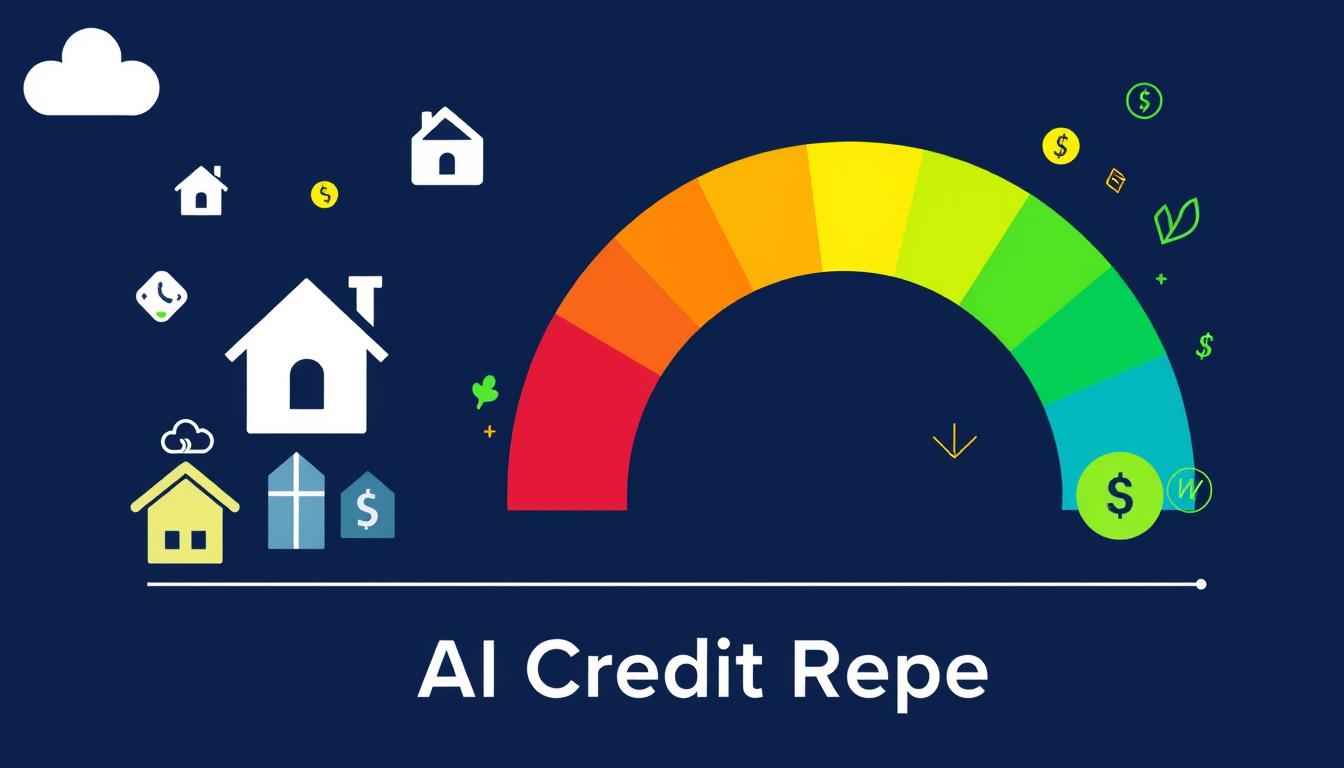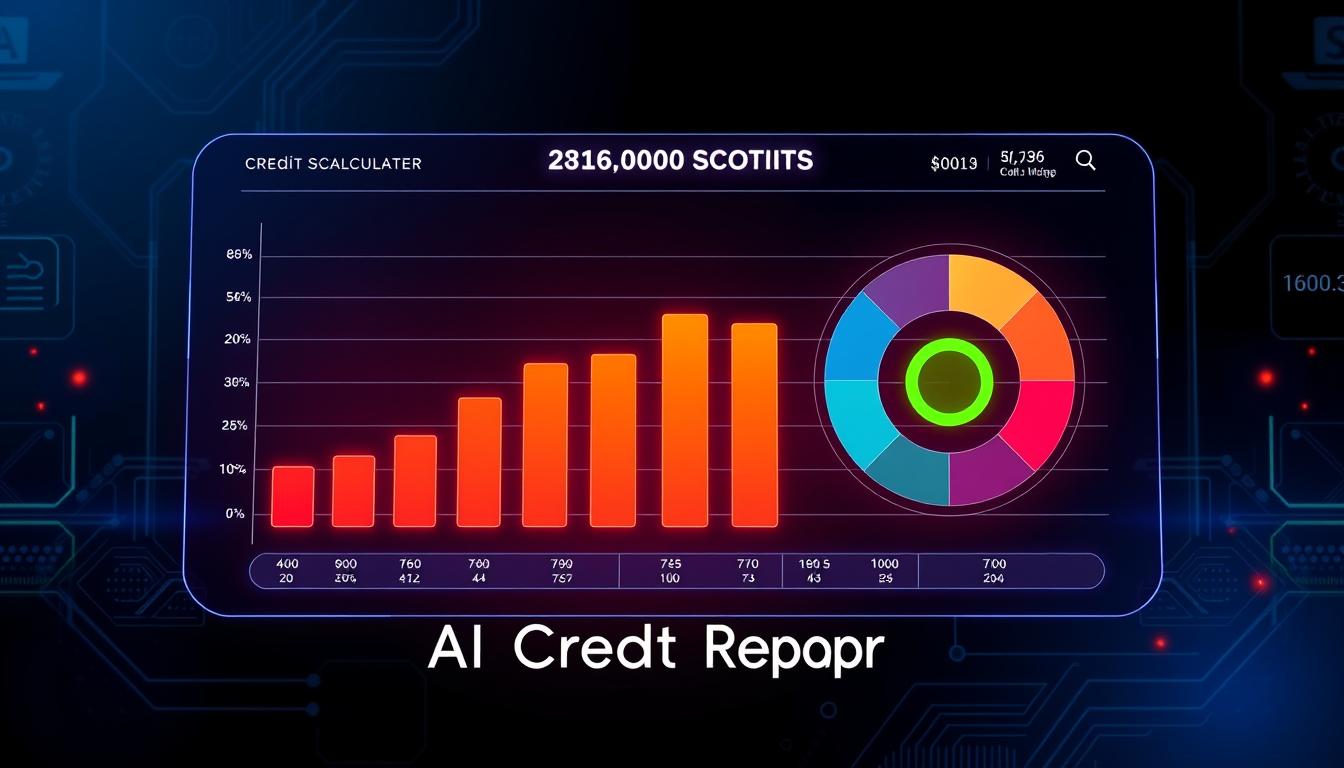Your credit score reflects your financial standing and creditworthiness. It’s more than just a number. A credit score percentile calculator helps you understand where you rank among other consumers.
This article explores credit score percentiles and their importance. We’ll show you how to use a calculator to assess your credit standing.
Key Takeaways
- Credit score percentiles measure your creditworthiness compared to other consumers.
- Understanding your credit score percentile helps you make informed financial decisions.
- A credit score percentile calculator determines your rank and credit standing.
- Payment history and credit utilization can impact your credit score percentile.
- Improving your percentile can lead to better interest rates and financial opportunities.
Understanding Credit Score Percentiles
Your credit score percentile compares your credit score to others. It shows where you stand in the credit score range. This insight helps you understand your creditworthiness compared to other consumers.
What Are Credit Score Percentiles?
Credit score percentiles use models like FICO and VantageScore. These models assign scores from 300 to 850. Your percentile shows how many people have lower scores than you.
For example, if you’re in the 80th percentile, 80% of people have lower scores. This information helps you gauge your financial standing.
Why Credit Score Percentiles Matter
Your credit score percentile reveals your financial standing and creditworthiness. A higher percentile means you’re a lower-risk borrower. This can lead to better interest rates and loan terms.
A lower percentile might show areas for improvement. It can help you identify ways to boost your credit score.

Tracking your percentile helps you measure progress in your financial health. This knowledge is useful when applying for credit or negotiating with lenders.
How Credit Score Percentile Calculators Work
Credit score percentile calculators offer insights into your credit standing. They analyze your credit data and compare it to the broader population. This helps you understand where your score falls on the percentile scale.
These calculators use data from credit reporting agencies like FICO and VantageScore. They assess your score in relation to other consumers. This process determines your credit score percentile.
- The credit score percentile calculator compares your score to other consumers’ scores.
- This comparison shows your credit score ranking against the broader credit score distribution.
- The credit score comparison tool gives a full view of your credit standing.
Credit score benchmarking provides a clear snapshot of your credit health. This info helps you spot areas to improve. It allows you to take steps to boost your creditworthiness.

“Understanding your credit score percentile is a crucial step in managing your financial future.”
These calculators offer an easy way to check your credit standing. They empower you to make smart choices about your finances.
Factors Affecting Your Credit Score Percentile
Your credit score percentile is crucial for a strong financial standing. Two key factors are payment history and credit utilization ratio. These elements greatly influence your credit score.
Payment History
Payment history is the largest part of your credit score. It shows how reliable you are with on-time payments. Paying bills before they’re due shows financial responsibility.
This can boost your credit score percentile significantly. Late or missed payments can hurt your credit score and percentile.
- Late or missed payments can have a negative impact on your credit score and percentile.
- Paying at least the minimum amount due each month, even if you can’t pay the full balance, can help maintain a positive payment history.
- Setting up automatic payments or payment reminders can ensure you never miss a due date.
Credit Utilization Ratio
The credit utilization ratio compares your credit card balances to your credit limits. Keeping this ratio low, below 30%, can positively impact your credit score.
Managing your credit card balances regularly helps maintain a low ratio. Requesting credit limit increases can also improve your ratio.
- Regularly monitoring and managing your credit card balances can help maintain a low credit utilization ratio.
- Requesting credit limit increases from your card issuers can also improve your credit utilization ratio.
- Avoiding maxing out your credit cards can further contribute to a healthy credit utilization ratio.
Managing these credit score factors can boost your credit score percentile. Focus on your credit utilization ratio and payment history impact. This will enhance your financial well-being.

Interpreting Your Credit Score Percentile
Credit score percentiles are key to gauging your financial health. They range from 0 to 100. Higher percentiles show better creditworthiness. Comparing your percentile to industry standards offers valuable insights.
Here are some benchmarks to help you interpret your credit score percentile:
- Excellent Credit: A credit score percentile between 81-100 is considered excellent. These individuals have a long history of responsible credit use. Lenders view them as low-risk borrowers.
- Good Credit: A credit score percentile between 61-80 is considered good. These people manage their credit well. They likely qualify for favorable loan terms.
- Average Credit: A credit score percentile between 41-60 is considered average. These individuals may need to improve some areas. However, they are still creditworthy.
- Poor Credit: A credit score percentile between 21-40 is considered poor. These people may struggle to get credit. They might face higher interest rates.
- Very Poor Credit: A credit score percentile between 0-20 is considered very poor. These individuals often have missed payments or high debt. Their creditworthiness is severely impacted.
Knowing your credit score percentile helps assess your financial standing. It can reveal areas for improvement. This knowledge is crucial for making smart financial decisions.
| Credit Score Percentile Range | Interpretation |
|---|---|
| 81-100 | Excellent Credit |
| 61-80 | Good Credit |
| 41-60 | Average Credit |
| 21-40 | Poor Credit |
| 0-20 | Very Poor Credit |
Understanding your credit score percentile offers vital insights into your finances. It helps you improve your credit score range. You can boost your overall credit score percentile benchmarks.
Credit Score Percentile Calculator
Understanding your credit score is vital in today’s financial world. Our online credit score percentile calculator helps you compare your score to others. This tool gives you valuable insights into your financial health.
The free credit score percentile tool is easy to use. Enter your credit score, and it shows your credit score percentile assessment. This percentage reveals how your score compares to other consumers.

Your credit score percentile offers insights into your financial well-being. It helps you make smart decisions about managing your credit. You can identify areas to improve and boost your overall credit profile.
“Knowing your credit score percentile is like having a roadmap to financial success. It empowers you to make strategic decisions that can positively impact your financial future.”
Your credit score percentile matters for loans, apartments, and even jobs. Our online credit score percentile calculator takes the guesswork out of understanding your credit standing. It helps you take steps to improve it.
Use our free credit score percentile tool to unlock your credit score’s power. Start your journey to financial stability today.
Improving Your Credit Score Percentile
Boosting your credit score percentile is achievable with practical steps. Paying bills on time and reducing debt are two effective strategies. These methods can help improve your score over time.
Pay Bills on Time
Your payment history greatly impacts your credit score. Pay all bills by their due dates each month. This includes credit cards, loans, and utilities.
A single late or missed payment can significantly lower your score. Consistent on-time payments will help improve your credit standing.
Reduce Debt Balances
Managing debt is crucial for raising your credit score percentile. Focus on paying down outstanding balances, especially on credit cards. Aim to keep your credit card balances below 30% of your total limit.
Lowering your credit utilization ratio can positively impact your score. This shows lenders you’re using credit responsibly.
Optimizing payment history and debt levels can boost your credit score percentile. These strategies enhance your financial profile and creditworthiness. With time, you’ll see meaningful progress in your credit standing.
“Improving your credit score percentile takes time and discipline, but the payoff is worth it. With healthy credit habits, you can unlock better interest rates, more favorable loan terms, and greater financial opportunities.”
Credit Score Percentiles by Age Group
Age can significantly influence credit score percentiles. Young adults, middle-aged consumers, and seniors show distinct credit score patterns. These differences stem from credit history length and financial responsibilities.
Young Adults
Younger individuals typically have shorter credit histories. This affects their credit score percentiles. As they build their credit, young adults may find themselves in the lower credit score percentiles, often in the 30th to 50th percentile range.
Factors like limited credit experience and higher debt-to-income ratios play a role. Early financial missteps can also impact their scores.
Middle-Aged Consumers
Consumers in their mid-30s to late 50s often have more established credit histories. They generally enjoy better financial stability. This age group typically falls within the 50th to 80th credit score percentiles, reflecting their ability to manage credit responsibly over time.
Senior Citizens
Older adults tend to have the highest credit score percentiles. Senior citizens frequently rank in the 70th to 90th credit score percentiles, benefiting from decades of responsible credit management and financial stability.
Seniors often have lower debt burdens and more predictable income sources. These factors help them maintain strong credit profiles.
Generational credit score trends offer valuable insights into credit score percentile by age. Understanding these patterns can help consumers improve their credit standing.
Myths and Misconceptions About Credit Score Percentiles
Your credit score percentile isn’t set in stone. It can change as your financial health improves or declines. Many people have wrong ideas about this important number.
A high credit score doesn’t always mean better loan terms. Lenders look at more than just your credit score. They consider other factors when deciding to lend money.
Checking your own credit score won’t hurt it. In fact, it’s good to monitor your credit regularly. This type of check is called a “soft” inquiry.
Using a trusted credit monitoring service can help maintain your financial health. It allows you to keep track of changes in your credit score. This practice can lead to better financial decisions over time.

